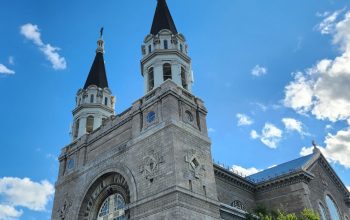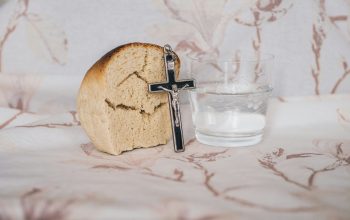A note on the college’s Catholic history and its implications for academic life at St. Mike’s today
Zenon MacKinnon, Logos Editor
In 1850, Toronto, then the sleepy capital of the largely irrelevant British colony of Upper Canada, wasn’t exactly known as a place of great learning. There was one institution of higher learning, the Anglican King’s College. This would develop later that decade into the secular University College and the Anglican Trinity College, initially a seminary meant for the training of Protestant clergy. Both were bastions of privilege, with only the sons of the tightly knit Family Compact clans attending.
But Toronto’s population was growing as new families from Catholic Ireland came and settled. Aside from the discrimination these families faced in the deeply anti-Catholic environment of colonial English Canada, they were faced with a severe institutional problem: they didn’t have schools. The Catholic Church operated a small system, but if anyone wanted to attend something like what we now call high school, the pickings were slim and Protestant, worse for the pious Irish.
Toronto’s Catholic bishop, Armand-Francois-Marie de Charbonnel (whose name graces a handful of places around campus) invited a group of priests from France who had built high schools in the rural towns of the Alps to come and teach the working-class Irish boys of the New World. These priests, known as the Congregation of St. Basil, still run the campus church, where students can go at noon for Catholic mass or at any time of day for a quiet moment.
The Basilian Fathers would later establish high schools and colleges throughout what is now Canada, but the University of St. Michael’s College (St. Mike’s) was their first and greatest project in the young country. It was held up as an example of what Catholic education ought to be: orderly, expansive, and available to the poorest communities. St. Mike’s curriculum is unique to our college, as it was modeled after those of the French colleges the Basilians had known in the old country. It was heavy on philosophy, stressing engagement with the world, and a concern for moral justice.
This history can feel distant, but it is worth contemplating today. St. Mike’s no longer feels entirely Catholic, of course, despite still being officially affiliated with the Church. As part of federating with the other colleges into the University of Toronto (U of T), much of the unique character of St. Mike’s fades slowly away, decade by decade as U of T centralizes. Beyond small classes about church history and the plangent bells of St. Basil’s, what remains of St. Mike’s identity as a Catholic university?
The Church has a document that explains what a Catholic university ought to look like. Published in 1990, the apostolic constitution Ex Corde Apostolica is worth reading for any university student, regardless of what one might feel about God or religion. It puts forward a vision of universities as carrying out a mission that is grave and important for civilization. “Scientific and technological discoveries,” the document says, “create an enormous economic and industrial growth, but they also inescapably require the correspondingly necessary search for meaning in order to guarantee that the new discoveries be used for the authentic good of individuals and of human society as a whole.” It demands of universities that they take a curious, almost suspicious attitude to new developments that might seem easier, asking whether new technology that might make things more convenient and cheaper really serves our souls.
Ex Corde Apostolica goes on to list off the duties of faculty, administrators, and students. All are worth careful reflection, but for us, as students, it is those duties we should keep first in mind. Aside from pursuing our studies, it says that we “are challenged to continue the search for truth and for meaning throughout [our] lives,” particularly outside the classroom. It isn’t enough to show up to class. You have to be engaging with your whole mind in everything you do. You have to be arguing with your friends and mulling over what you do, asking yourselves if what you are living is a truthful, meaningful life.
This is what it truly means to go to a Catholic university. The next time you pass by St. Basil’s or see an old man in a cassock doddering across the quad, let it remind you of our heritage. And reflect for a moment on whether we measure up to those Basilians who built a whole new college in a muddy town on the other side of the world, or to the high standard of a student who searches for meaning in everything they do.



